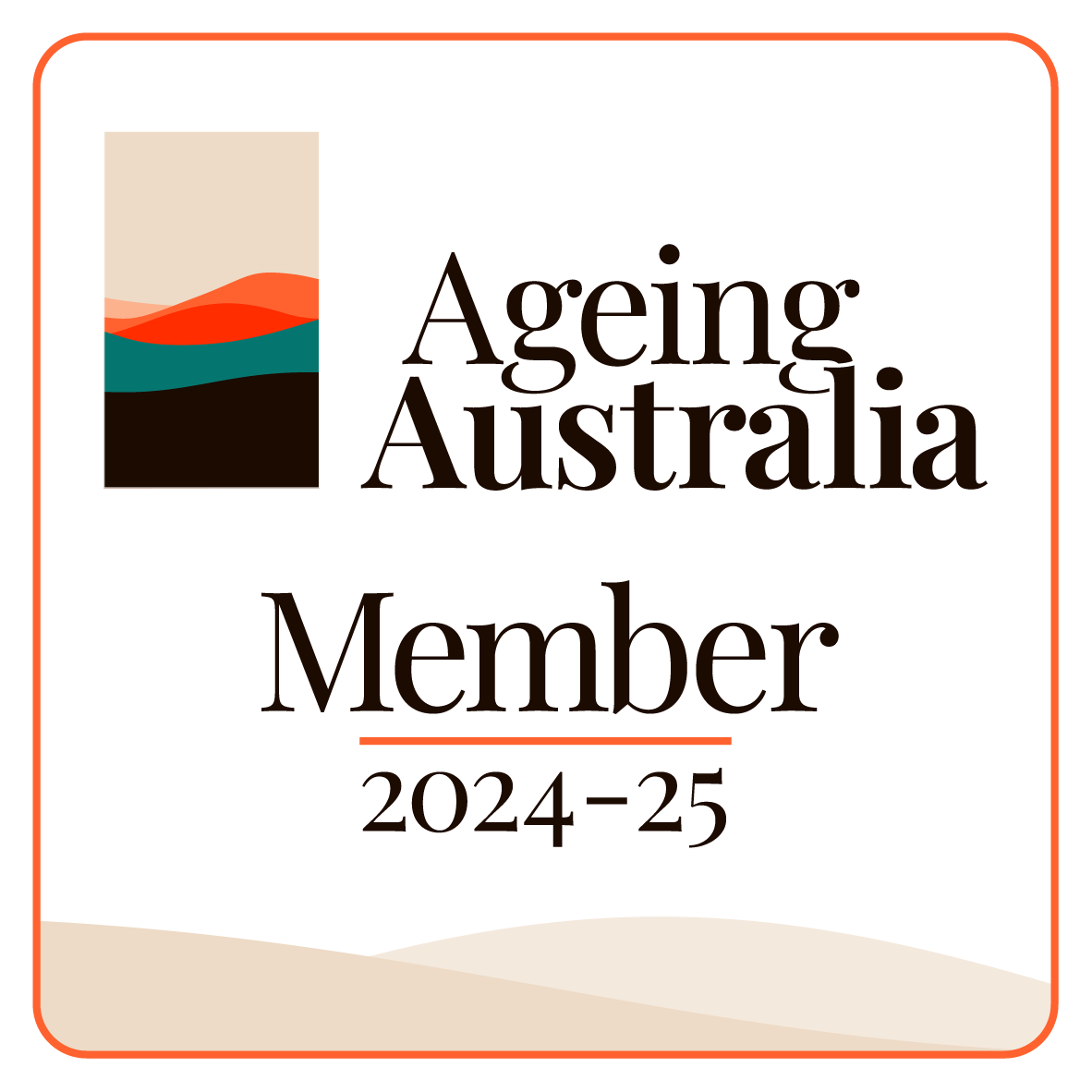Understanding the Support at Home Program
In Summary:
- From Nov 1, 2025, Support at Home will supersede Home Care Packages and Short-Term Restorative Care.
- The program intends to simplify assessments, streamline services, and provide more flexibility.
- Recipients will get quarterly funding, with roll-over limits (greater of $1,000 or 10 %).
Aunty Grace positions itself to guide clients (new and existing) through the transition. - The new system aims for broader service lists: domestic help, allied health, assistive tech, home mods.
Australian aged care is changing forever on November 1st 2025 with the introduction of some sweeping reforms under the new Support at Home program. The reforms will simplify access to a broader range of customisable services, and help ensure seniors can live independently and safely at home.
The first major change is the replacement of the current Home Care Packages (HCP) and Short-Term Restorative Care (STRC) programs with the new Support at Home program. Merging these 2 programs into a single program will help streamline the aged care system, and create a more user-friendly system.
But - it's important older Australians and their families and caregivers understand the changes, and how they will impact their current and ongoing care arrangements.
Key Features of the Support at Home Program
The Support at Home program specifically targets current gaps and inefficiencies in our aged care system. It will provide:
- Streamlined Assessment Process
The current multiple assessment system is unnecessarily complex and drawn out, resulting in confusion and long wait-times. The new Support at Home program will simplify and streamline the process with a single assessment system that ensures:
- Older Australians only need ONE comprehensive assessment to determine their eligibility and care requirements.
- Assessments are carried out by trained professionals and factor in personal circumstances and specific medical and functional needs.
- Wait times are reduced so people can start receiving the help they need sooner.
This approach takes into account individual needs and circumstances, reduces wait times, and provides faster access to essential services.
- Personalised Support Plans
Under the new program, each person has an individualised support plan personalised to suit his or her specific needs, goals, and preferences. The plan will also have the flexibility to adjust services as circumstances change.
Each plan will specify:
- The types of services the individual requires, be it domestic help, personal care, nursing etc.
Goals for maintaining or improving their independence. - This approach, with its focus on personalisation, means older Australians get the right help, at the right time, which is similar to the My Aged Care Support Plan.
- Clear Service List
The new program will provide a clearer, more transparent definition and explanation of available services. It will also expand the scope and range of services to include both traditional care services like meal preparation, cleaning, and transport as well as:
- Allied health services: physiotherapy, occupational therapy, and similar specialist services.
- Assistive technology: mobility aids, smart home modifications, and various assistive devices.
- Home modifications: ramps, railings, and other safety modifications to improve accessibility and independence for seniors.
This broader range of services reflects the government’s commitment to providing holistic and preventative care to support senior Australians at home.
Legislative Framework: A New Aged Care Act
The Support at Home program is founded on legislation passed under the November 2024 Aged Care Act. It is part of a broad series of Federal Government reforms designed to address the recommendations put forward by the Royal Commission into Aged Care Quality and Safety.
Objectives of the New Act
- Quality and Safety: tighten and strengthen regulations to make sure providers across the board deliver high standards of care.
- Consumer-Centric Approach: provide older Australians with more autonomy and control over their care.
- Transparency: give consumers better access to information, and improve accountability for service providers.
The Act also introduces stronger measures to help make sure providers deliver services ethically and efficiently. Penalties will apply to those who don’t meet the required standards.
Transitioning to the Support at Home Program
People will start transitioning to the Support at Home program in stages to minimise disruption.
Current Home Care Package (HCP) Recipients
Around 215,000 Australians currently receive HCPs. For these people:
- Services will continue uninterrupted until the new program starts.
- Recipients will transition to the Support at Home program on 1 November 2025.
- Any unused funds from HCP budgets will roll over into the new program to guarantee continuity of care.
- Client contributions will also be capped for HCP recipients at the same amount as their contributions before the transition date (see section on contributions below)
Commonwealth Home Support Programme (CHSP) Recipients
For CHSP participants:
- The CHSP will not be integrated into the Support at Home program until at least July 2027. It will continue to operate separately as per current arrangements until then.
- This extended timeline is designed to allow the government to finalise the transition plan for CHSP services.
Financial Contributions and Affordability
The Support at Home program is designed to balance equity and sustainability. Contributions will be based on an individual’s financial situation so care remains affordable for those with limited means. This makes the system fair for everyone, regardless of income, whilst ensuring it can continue to support people long term.
For Full Pensioners
- Full pensioners will pay 5% of the cost for services related to independence support (i.e. home modifications) and 17.5% of services providing everyday living support (i.e. cleaning and meal preparation).
- The government will continue to fully fund clinical services, such as nursing and allied health.
For Self-Funded Retirees
- Self-funded retirees will contribute proportionately more towards their care but caps and safeguards will ensure services remain affordable for them too.
Note: this is a broad outline; more information about fee structures and subsidy calculations will be confirmed closer to launch date.
Impacts on Consumers and Families
How will the new system affect senior Australians and their families? The truth is that we don’t know for sure because some details are yet to be confirmed. However, there will likely be both positive and negative impacts. Some are listed below:
1. Choice and Control
With its focus on personalised support plans, senior Australians and their families and caregivers will have more control over their care under the new program. They should also find it easier to navigate the system given its single point of contact for inquiries and streamlined assessments.
2. Changes to Care Management
The proposed removal of Package Management fees and introduction of a lower cap on Care Management fees should redirect more funding to care services. However, the changes could also increase service prices and reduce the amount and quality of support carers can provide.
3. Higher funding amounts
With 8 package levels and higher total funding amounts than the current HCP program, the new program will deliver many increased benefits for senior Australians. However, the net benefit to individuals could be offset by potentially higher contributions for non-clinical services. Further, as unspent funds will no longer accrue from year to year, it may impact some plans for long-term care needs.
4. Financial Considerations
While the program aims to be fair for everyone, some seniors might face higher fee structures. They may have to contribute more for certain services, and could come up against caps on assistive technology and home modifications. Seniors and their families will need to understand these changes, and budget accordingly.
Challenges and Uncertainties
Although the program certainly holds promise, some of the finer details are still being worked out:
- Provider Arrangements: We don’t yet know how service providers will be contracted and monitored.
- Fee Structures: Detailed information on service costs, caps, and subsidy calculations for self-funded retirees hasn't been provided yet.
- Transition Support: Smoothly transitioning current HCP recipients to the new system will require careful planning and clear communication.
Advocacy groups, industry experts, and other stakeholders are asking the government to provide clear answers on these points, and to allow people more time to prepare for the changes.
Preparing for the Change
Preparation is going to be the key to navigating these changes successfully. For older Australians and their families, that means:
- Staying Informed: Keep an eye on updates from the Department of Health and Aged Care to understand how the changes will affect you.
- Engaging with Providers: Discuss your current care plan and transition arrangements with your current providers so you know what's in store and won’t experience a break in services.
- Planning Financially: Although these changes will have less impact if you’re already on a HCP, it’s still important to review your household budget and perhaps seek financial advice to help prepare for any potential cost increases.
The Road Ahead
The Support at Home program is an important and big step towards a more integrated, consumer-focused aged care system. With a focus on supporting independence, personalising care, and offering a wider range of services, it should better meet the needs of Australia’s aging population.
But – like any major reform, its success ultimately comes down to how well it’s put into practice. Older Australians, their families, and care providers can help this process by providing feedback and participating in government consultations to help shape a system that works for everyone.
If you’d like more information about the Support at Home program and its scheduled rollout, visit the Department of Health and Aged Care’s official website.



